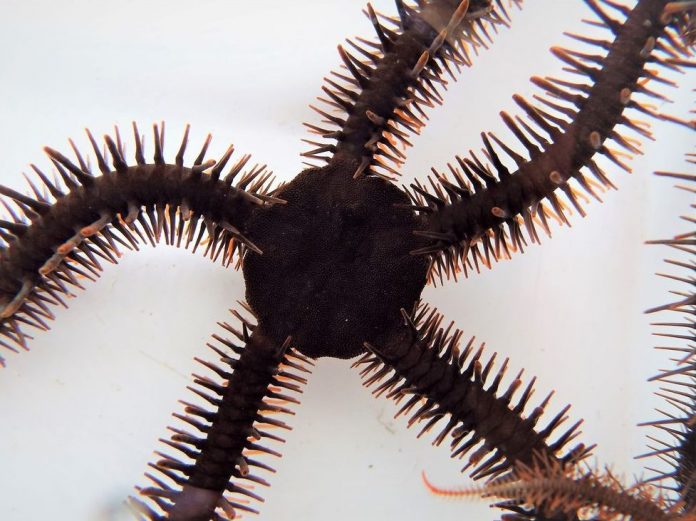The red brittle star doesn’t have eyes in the traditional sense. But this marine creature still is able to use vision to find its way through coral reefs thanks to what scientists call a “neat color-changing trick.”
Previously, researchers discovered that the red brittle star is covered in light-sensitive cells, but researchers weren’t sure how the species utilized them. The latest research, published this week in the journal Current Biology, suggests the brittle star’s color-changing capabilities help it use its light-sensing cells to see.
In labs across the globe, an international team of scientists subjected red brittle stars to dozens of behavioral tests designed to characterize the species’ visual abilities.
“These experiments gave us not only the first evidence that any brittle star is able to ‘see,’ but only the second known example of vision in any animal lacking eyes,” Lauren Sumner-Rooney, a research fellow at Oxford University Museum of Natural History, said in a news release.
The behavioral experiments showed the brittle stars seek out contrasts. In the wild, contrasts in color may signify structures — nooks and crannies — that offer shelter from predators.
Tests also showed the seeing abilities of the red brittle star are quite limited. Not only is their vision coarse, but it’s nonexistent at night.
“We were surprised to find that the responses we saw during the day disappeared in animals tested at night, yet the light-sensitive cells still seemed to be active,” said Sumner-Rooney.
To figure out why the red brittle star can’t see at night, scientists used a close relative, Ophiocoma pumila, for comparison. Unlike the red brittle star, which turns red during the day but assumes a beige tone at night, the relative is always the same color. Ophiocoma pumila is also covered in light sensing cells, but failed visual tests.
When researchers built models of the individual light sensors used by each species, they realized the pigmentation that grants the red brittle star its dark daytime pigmentation ensures that light reaches the sensors at only a narrow angle. Without the pigment, light arrives from wide angles, preventing visual perception.
“It’s a very exciting discovery,” said Sumner-Rooney. “It had been suggested 30 years ago that changing color might hold the key to light-sensitivity in Ophiocoma, so we’re very happy to be able to fill in some of the gaps that remained and describe this new mechanism.”
The only other eye-less animal known to see is a sea urchin that is distantly related to the red brittle star. The sea urchin also changes colors, and scientists plan to conduct tests to see if the species uses its color-changing abilities to enable its vision, just like Ophiocoma.















